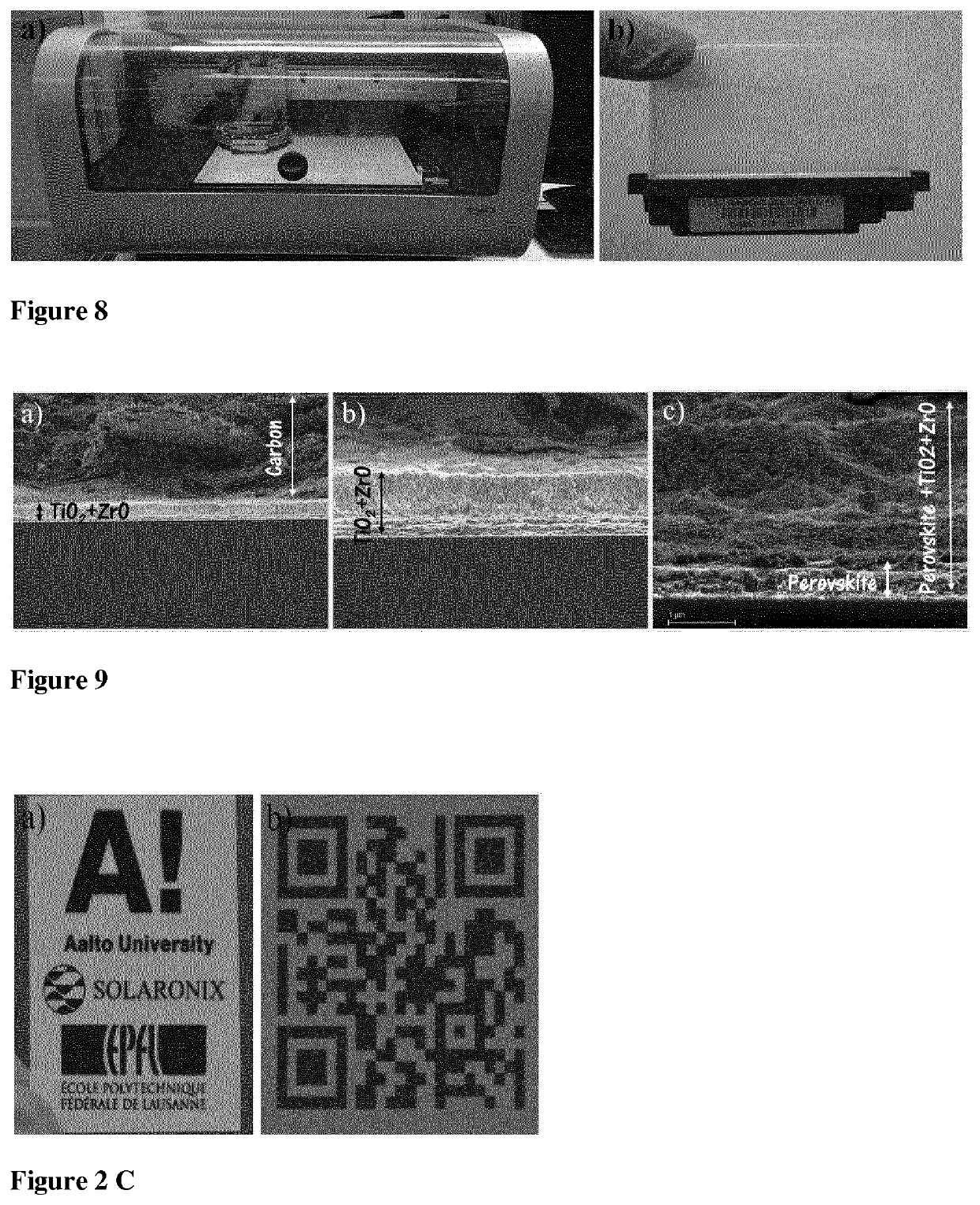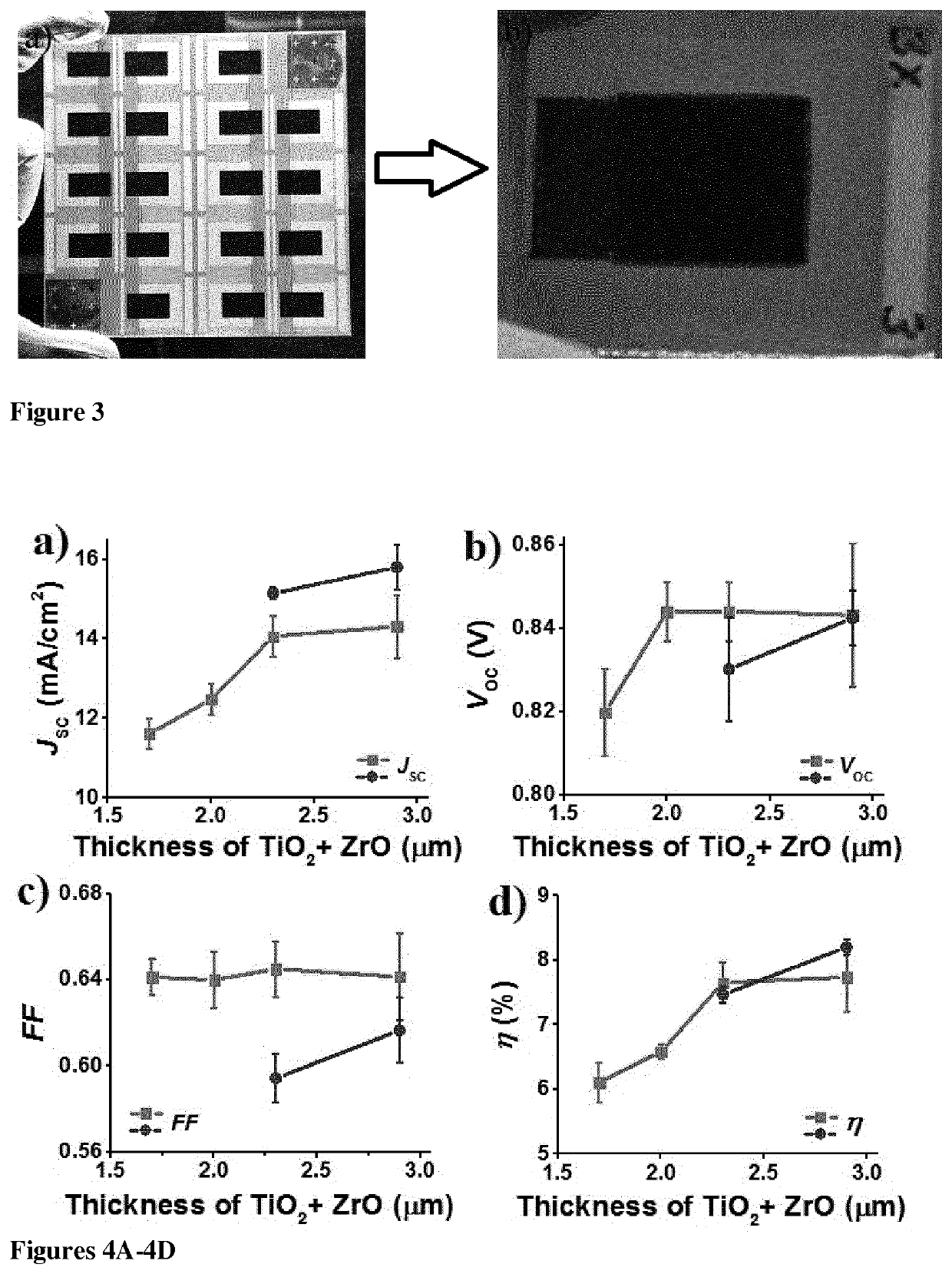Method for Inkjet Printing an Organic-Inorganic Perovskite
- Summary
- Abstract
- Description
- Claims
- Application Information
AI Technical Summary
Benefits of technology
Problems solved by technology
Method used
Image
Examples
example 1
ls in Accordance with an Embodiment of the Invention
1. Preparation of Solar Cells for Deposition of Precursor Solution
[0185]Triple layer solar cells of the configuration TiO2 / ZrO2 / C, deposited on a conducing transparent substrate but yet lacking a perovskite light harvester were prepared as follows.
[0186]Fluorine doped tin oxide (FTO) coated glass substrates (10×10 cm2, RSH=7 Ω / Sq, Product code: TCO22-7, Solaronix) were first etched with an automated fiber laser, and cleaned by sequential sonications in Hellmanex 1% aqueous solution, acetone, and isopropanol (15 min each). Then a compact layer of TiO2 (30-40 nm) was deposited by spray pyrolysis over the etched glass substrates placed on a hot-plate set to 550° C., of a diluted solution of titanium diisopropoxide bis(acetylacetonate) (75% in isopropanol, Sigma-Aldrich) in absolute ethanol (1:80) using oxygen as a carrier gas. Areas of the substrate had been masked with glass strips to prevent the coating in the subsequent silver area...
example 2
n of Stability of Inks of the Invention and Prior Art Inks
experiment 1
[0198]Two inks were compared for demonstrating the superior stability at room temperature of the ink according to an embodiment of the invention.
Compositions of Inks
[0199]Ink 1: 1.1 g PbI2, 0.38 g MAI, 0.029 g AVAI (40 wt % in GBL, γ-butyrolactone)
[0200]Ink 2: 1.1 g PbI2, 0.38 g MAI (No AVAI).
[0201]Ink 2 contains equimolar concentrations of PbI2 and MAI (methylammonium iodide). Ink 1 contains, in addition 5-AVAI, which is a compound of formula (I) in accordance with an embodiment of the invention.
[0202]In the photographs in FIG. 11, panels a) and b), it is apparent that both inks provide clear solutions when the inks are fresh. After storage at room temperature (25° C.) for 20 minutes, ink 2 shows clouding indicating precipitation, as shown in panel c) of FIG. 11 and in FIG. 12.
[0203]In conclusion, Ink 1 produced in accordance with an embodiment of the invention showed remarkable stability compared to Ink 2. Ink 1 is particularly suitable for inkjet infiltration, whereas ink 2 will ...
PUM
 Login to View More
Login to View More Abstract
Description
Claims
Application Information
 Login to View More
Login to View More - R&D
- Intellectual Property
- Life Sciences
- Materials
- Tech Scout
- Unparalleled Data Quality
- Higher Quality Content
- 60% Fewer Hallucinations
Browse by: Latest US Patents, China's latest patents, Technical Efficacy Thesaurus, Application Domain, Technology Topic, Popular Technical Reports.
© 2025 PatSnap. All rights reserved.Legal|Privacy policy|Modern Slavery Act Transparency Statement|Sitemap|About US| Contact US: help@patsnap.com



